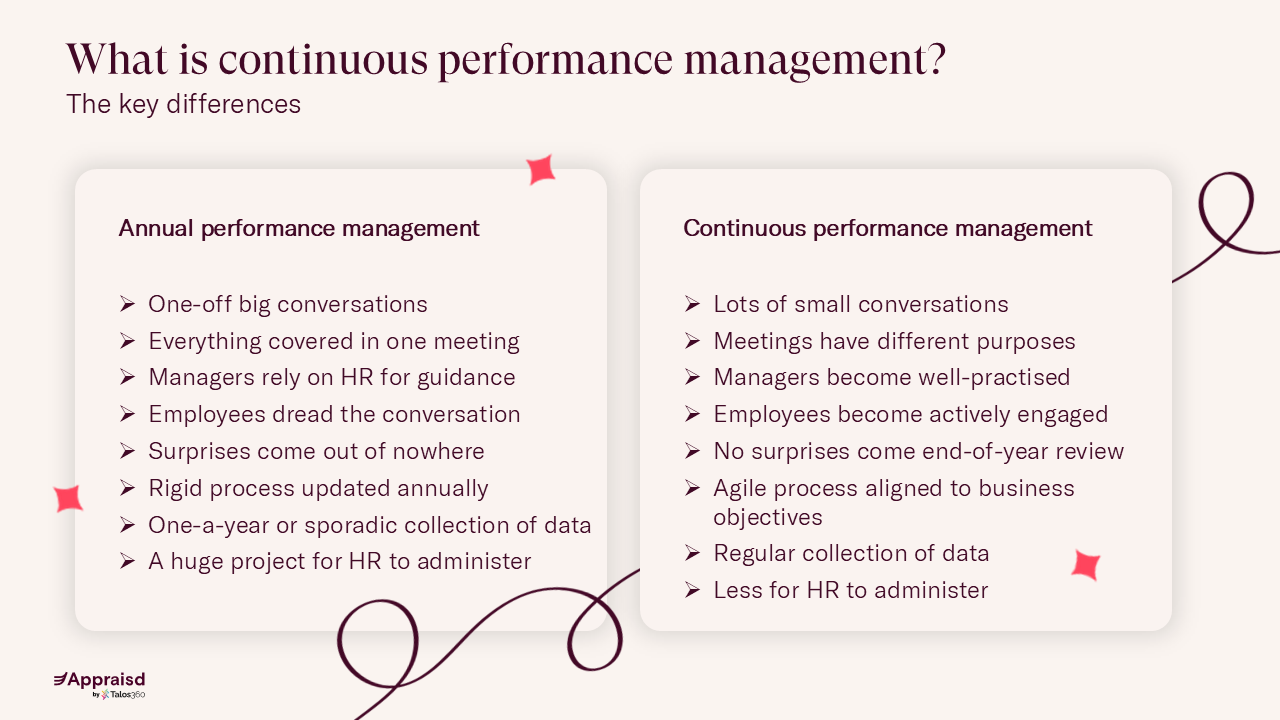.png)
This summer we’ve enjoyed delivering in-person workshops to HR professionals who are thinking about adopting elements of continuous performance management. Why are more organisations evolving towards this approach?
Research shows that companies that invest in comprehensive performance management (so not just an annual box-ticking exercise) report a 180% to 340% ROI within the first 18 months of implementation and report 44% better talent retention and 39% stronger talent attraction compared to annual-only models. Today, only 54% of companies still use an annual review-only model (down from 82% in 2016).
Is it more work for HR and managers?
So, why wouldn’t you consider moving towards continuous performance management? Often, it’s because it sounds like a massive cultural shift for employees, not to mention their line managers who hear the word ‘continuous’ and assume it’s going to be more work for them.
But one of the rewarding parts of adopting more continuous elements in your process is that you can do it bit-by-bit at a pace to suit you. As you do so, you’ll see those annual peaks and troughs (and panics!) melt away. The end result being less work for both HR and managers and a whole load of other benefits that come with addressing performance in the moment.
The key differences between annual and continuous performance management
With annual performance management there is likely to be a one-off annual ‘big’ conversation where everything performance, pay and promotion-related is covered. Because managing performance isn’t a regular habit for managers they tend to rely on HR for guidance, and for employees, this annual event can be a dreaded conversation. Because feedback hasn’t been regularly discussed during the year, there is scope for surprises which nobody wants!
With continuous performance management, there are lots of small conversations throughout the year and those meetings have different purposes such as regular check-ins vs career conversations or wellbeing check-ins. Because managers become well practised they can take more ownership, and employees can become actively engaged in regular conversations - and more comfortable with a culture of feedback. Plus, there are no surprises come end-of-year review time thanks to regular check-ins.

The typical element of a continuous process
These vary in every organisation we work with, and customers tend to start with a few features before adopting more. We often advise them to make a list of what they’d like to adopt ‘now, next and later’ to help prioritise. Typical elements include weekly or monthly manager check-ins, quarterly or 6-monthly reviews, 360 feedback, instant feedback, colleague recognition, wellbeing check-ins, objective-setting check-ins and probations check-ins.
So, should we ditch the annual performance review?
Not just yet! The annual review creates time and space for reflection. It forms part of the continuous conversation around performance and development. Many organisations need an appropriate moment to discuss pay, bonus and promotion, and the annual review can be ideal for that. With continuous performance management, the annual review becomes a more high-value conversation.
Explore continuous performance management with Appraisd
Would you like to learn more about continuous performance management? Join our free online workshop this September for a taster of how it could work for your business.



.jpg)






.png)





